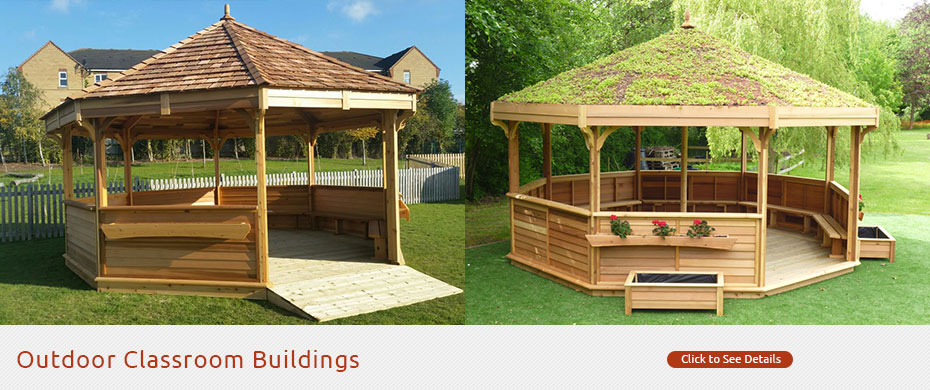Forest School Outdoor Classroom
We have had many enquiries from schools this past year for outdoor classroom buildings for their forest school settings – be it on their own grounds or as part of a shared facility with a local established forest school set up.
You could argue that the forest or woodland itself is the outdoor classroom – which of course it is – but our buildings are principally used as an outdoor classroom facility where a class can easily sit down, undertake their learning-outside-of-the-classroom studies or simply take shelter! But like always, we have adapted our buildings to enhance this environment – for example we have supplied a fire pit shelter and outdoor classroom building with a cooking area fire pit in the middle and a hole in the roof so that the smoke can easily exhaust out and upwards; another one had built-in bug hotel wall panels so that the children could get up close and personal with those mini beasts; we have supplied observation tables with magnifying glasses and you can even have one with living wall panels where growing plants (or creepers) gradually grow up the side of the building to give that ultimate hideaway courtesy of Mother Nature!
We can also put outdoor toilets in them too. And if they are fully enclosed, you can heat them via a wood burning stove from wood and logs the children have collected from the wood or forest.
Forest schools provide a great opportunity for children to learn to play outdoors all year round and to learn about their natural environment. We just help that process with the products we supply
For more information, please visit Forest Schools or contact the Hideout House Company on 01865 858982, email info@hideouthouse.com or visit www.hideouthouse.com











